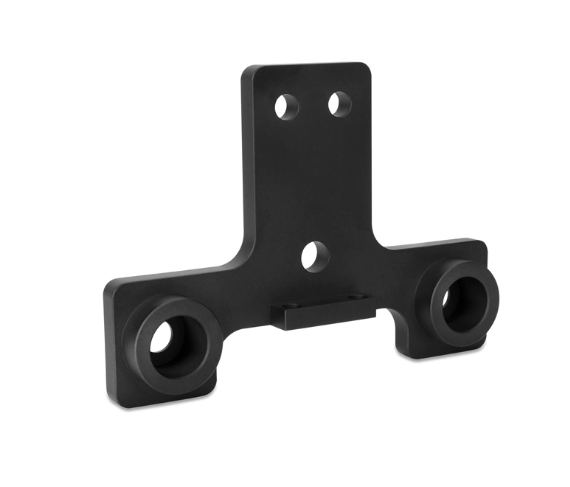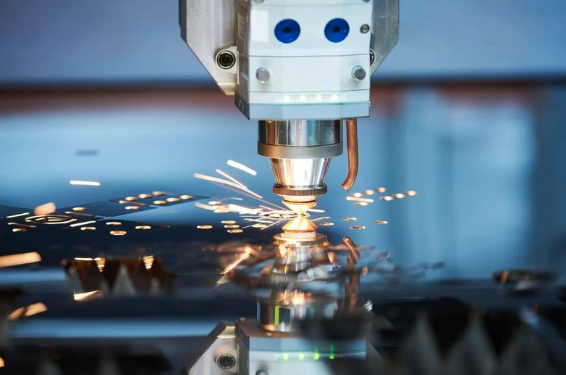


The evolution of CNC machines from past to present
Views: 0 Author: Site Editor Publish Time: 2025-09-12 Origin: Site









Desktop CNC machines have revolutionized modern manufacturing, bringing precision, automation, and flexibility to small workshops, educational labs, and hobbyists. Unlike traditional industrial CNC machines, desktop versions are compact and affordable, yet still capable of delivering high-quality CNC Turning Capabilities and CNC Milling Services.
Before CNC, manufacturing relied on manual machines or early Numerical Control (NC) systems. Manual tools demanded skilled operators, while NC machines used punched tape to automate movements but lacked flexibility. Desktop CNC machines changed the game by integrating computers, allowing precise, repeatable, and programmable machining.
| Feature | Manual Machines | NC Machines | Desktop CNC Machines |
|---|---|---|---|
| Control Method | Hand operated | Punch tape | Computer software |
| Accuracy | Operator skill | Limited | ±0.005 in typical |
| Speed | Slow | Moderate | Fast and consistent |
| Flexibility | Low | Low | High, programmable |
| CNC Turning/Milling | Limited | Limited | Full capabilities |
The Origins of Numerical Control (NC) Machines
Historical Context of Automation
Automation in machinery has a long and fascinating history that dates back to the 19th century. During this period, the Industrial Revolution was in full swing, and the need for more efficient and precise manufacturing processes was becoming increasingly apparent. Two notable examples of early automation are the Jacquard looms and player pianos. The Jacquard loom, invented by Joseph-Marie Jacquard in 1801, used punched cards to control the weaving of intricate patterns in textiles. This innovation not only increased the speed of production but also allowed for the creation of highly detailed and complex designs. Similarly, player pianos used punched cards to play music automatically, eliminating the need for a pianist to manually play each note.
Post-WWII Demand for Precision
After World War II, the manufacturing industry faced new challenges. The war had highlighted the need for high precision and speed in the production of various components, especially in the aerospace and defense sectors. Engineers began to explore ways to apply the principles of automation, similar to those used in Jacquard looms and player pianos, to machine tools. This marked the beginning of the development of Numerical Control (NC) machines, which would revolutionize manufacturing by reducing human error and increasing efficiency.

Pioneers of NC
John T. Parsons: The “Father of CNC”
One of the most influential figures in the development of NC technology is John T. Parsons. Known as the “Father of CNC,” Parsons played a crucial role in the early stages of automation. In the late 1940s, he collaborated with the U.S. Air Force to automate the milling of helicopter blades. At the time, the production of complex helicopter blades required a high degree of precision, which was difficult to achieve with manual machining. Parsons used IBM calculators and punched cards to develop a system that could automatically control the milling process. This groundbreaking work laid the foundation for modern CNC technology and demonstrated the potential of automation in manufacturing.
Frank L. Stulen: Aerospace Innovator
Another key figure in the development of NC technology is Frank L. Stulen. Stulen was instrumental in applying NC principles to aerospace manufacturing. His work focused on improving the accuracy and reliability of machine tools, which were critical for the production of high-performance aircraft components. By leveraging NC technology, Stulen and his team were able to achieve tighter tolerances and more consistent results, significantly enhancing the quality and performance of aerospace parts. His contributions helped establish NC as a viable and essential technology in the manufacturing industry.
Key Milestones in CNC Development
1940s – Conceptual Beginnings
The journey of CNC technology began in the 1940s, during World War II. Engineers were tasked with finding ways to improve the efficiency and precision of manufacturing processes to meet the demands of wartime production. They envisioned machines that could follow mathematical instructions, eliminating the variability and errors associated with manual machining. This conceptual phase laid the groundwork for the development of NC technology, which would soon transform the manufacturing landscape.
1950s – First NC and CNC Machines
The 1950s marked the birth of the first NC and CNC machines. In 1952, the Servomechanisms Laboratory at the Massachusetts Institute of Technology (MIT) built the first NC milling machine. This machine was a significant milestone, as it demonstrated the feasibility of using automated controls to guide machine tools. In 1958, Richard Kegg filed the first patent for a CNC machine, further solidifying the technological advancements of the time. Programs for these early machines ran on punched tape, which, while effective, limited the flexibility and speed of operations.
1960s – Computer Integration
The 1960s saw a major shift in the development of CNC technology with the introduction of computer integration. Magnetic tape and early computers replaced punched paper, allowing for more complex and flexible programming. This transition marked the beginning of programmable CNC machines, which could store and execute multiple programs, significantly enhancing their capabilities. The integration of computers also paved the way for future advancements in automation and control systems.
1970s – Microprocessor Revolution
The 1970s brought about the microprocessor revolution, which had a profound impact on CNC technology. The advent of microprocessors enabled the development of smaller, faster, and more affordable machines. This technological leap made CNC machines more accessible to a wider range of industries and applications. It also laid the groundwork for the development of desktop CNC machines, which would become increasingly popular in the following decades. The microprocessor revolution democratized CNC technology, making it a viable option for small-scale manufacturing and hobbyist projects.
1980s – CAD/CAM Integration
The 1980s witnessed another significant milestone in the evolution of CNC technology: the integration of Computer-Aided Design (CAD) and Computer-Aided Manufacturing (CAM). Graphical interfaces allowed engineers to design parts directly in CAD software and then use CAM to control CNC machines. This integration simplified complex operations by allowing designers to visualize and modify their designs before sending them to the machine for production. The CAD/CAM integration not only increased efficiency but also improved the accuracy and precision of CNC machining, making it an indispensable tool in modern manufacturing.
1990s – Global Expansion
The 1990s saw the global expansion of CNC technology, particularly in the realm of desktop CNC machines. These compact machines became increasingly accessible for educational purposes and small-scale applications. They supported a wide range of CNC Milling Services and hobbyist projects, enabling individuals and small businesses to engage in precision manufacturing. The widespread adoption of desktop CNC machines during this period further democratized manufacturing, fostering innovation and creativity in various fields.
2000s–Present – Smart Desktop CNC
In the 2000s and beyond, modern desktop CNC machines have evolved to become highly advanced and intelligent systems. They integrate the latest technologies, such as the Internet of Things (IoT), Artificial Intelligence (AI), and sensors, to provide unparalleled capabilities. These smart machines offer CNC Turning Capabilities and advanced milling in compact form factors, capable of handling a wide range of materials, including metals, plastics, and composites, with high precision. The integration of IoT and AI enables real-time monitoring, predictive maintenance, and optimization of machining processes, making modern desktop CNC machines highly efficient and versatile tools for both professional and hobbyist applications.
How Desktop CNC Machines Work
Desktop CNC machines combine hardware and software to perform precise operations:
Design Creation: Engineers use CAD software to create 2D/3D models.
Program Generation: CAM software converts models into instructions, often in G-code.
Machine Setup: Operators secure materials and tools.
Automatic Operation: Desktop CNC executes milling or turning operations.
Quality Control: Integrated sensors and measurement tools ensure accuracy.

Desktop CNC Machines vs Industrial CNC
| Aspect | Industrial CNC | Desktop CNC Machines |
|---|---|---|
| Size | Large, floor space | Compact, bench-top |
| Cost | High | Affordable |
| CNC Turning Capabilities | Heavy-duty | Moderate to high |
| CNC Milling Services | Full-scale | Small to medium batches |
| Setup Complexity | High | Moderate |
| Accessibility | Professionals | Makers, educators, startups |
Desktop CNC machines provide high precision and flexibility, making them ideal for small-scale, high-mix operations.
The Future of Desktop CNC Machines
Desktop CNC machines will continue evolving with Industry 4.0 trends:
AI-Powered Tool Paths: Optimize milling and turning for efficiency.
Cloud-Based CAD/CAM: Remote design and operation.
Hybrid Manufacturing: Combine CNC milling with 3D printing.
Educational Integration: Expanded hands-on learning in schools.
IoT Connectivity: Real-time monitoring and predictive maintenance.
FAQs
When was the first CNC machine patented?
1958, by Richard Kegg in collaboration with MIT.
What industries use desktop CNC machines?
Education, small manufacturing, hobbyist projects, prototyping, and research labs.
How does CNC compare to 3D printing?
CNC removes material for precise components, while 3D printing adds layers. CNC offers more material options and durability.
What programming languages are used?
Mostly G-code, along with proprietary CAD/CAM instructions.
What does the future hold?
Desktop CNC machines will integrate AI, IoT, and cloud-based workflows to enhance precision and flexibility.
Conclusion
From manual machines and punched tape NC systems to today’s smart desktop CNC machines, manufacturing has undergone a profound transformation. Desktop CNC machines provide affordable, precise, and flexible machining, making professional-grade milling and turning accessible to small workshops, educational labs, and hobbyists. Companies like Tongyu CNC Machining are at the forefront of this evolution, offering high-quality desktop CNC solutions that combine CNC Turning Capabilities and CNC Milling Services with modern AI and Industry 4.0 technologies. With such innovations, desktop CNC technology is poised to play a central role in the future of manufacturing.


